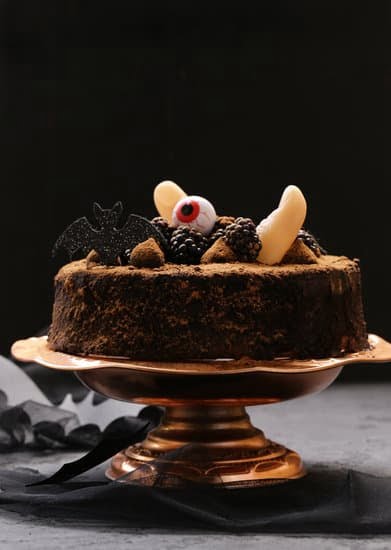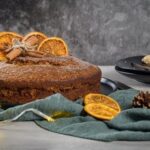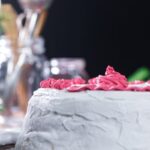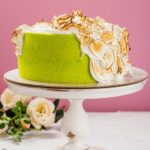Cake decorating is an art form that allows bakers to turn simple, plain cakes into stunning and beautiful creations. And one of the most popular techniques in cake decorating is creating intricate flower designs. Flowers add elegance, charm, and a touch of nature to any cake, making it a centerpiece that will surely impress. But to achieve these stunning floral decorations, you need the right cake decorating tips that make flowers.
Choosing the right tools and materials is crucial when it comes to cake decorating. From piping bags and tips to fondant cutters and molds, each tool plays a significant role in shaping and forming delicate flower designs.
The materials you use, such as different types of fondants, gum paste, or royal icing, also contribute to the overall look and texture of your flower decorations. By understanding the importance of selecting the right tools and materials for cake decorating, you can ensure that your flower designs are not only visually appealing but also structurally sound.
Before diving into the world of cake decorating, it’s essential to prepare your workspace for success. Having a clean and organized area free from distractions can help you focus on creating beautiful flower designs with ease. Setting up your workspace includes arranging necessary tools within reach, having a smooth working surface, and ensuring proper lighting. By taking the time to prepare your workspace properly, you’ll be setting yourself up for a successful cake decorating experience.
Mastering flower designs in cake decorating requires learning the basics of different types of flowers commonly used in this art form. Understanding various floral shapes, sizes, and patterns will give you more creative options when designing your cakes.
From roses and carnations to daisies and sunflowers, each flower has its own unique shape and petal arrangement that needs to be replicated accurately in cake form. By familiarizing yourself with these different types of flowers in cake decorating, you’ll be able to create visually appealing arrangements that resemble real blooms.
In this article section, we will explore the important foundation of cake decorating tips that make flowers. By highlighting the significance of choosing the right tools and materials, preparing your workspace for success, and learning the basics of different flowers in cake decorating, you’ll gain essential knowledge that will set you up for success in creating stunning flower designs on your cakes.
Whether you’re a beginner or an experienced baker looking to enhance your skills, these cake decorating tips will help you take your cake designs to new heights.
The Importance of Choosing the Right Tools and Materials for Cake Decorating
Cake decorating is an art form that requires precision and attention to detail. Choosing the right tools and materials is crucial to achieving beautiful and professional-looking flower decorations on cakes. Here are some key reasons why selecting the appropriate tools and materials is essential for cake decorating success:
- Quality of the Finished Product: Using high-quality tools and materials can significantly impact the final outcome of your cake decorations. For example, using good quality piping bags and tips will allow you to create clean and smooth lines, while using inferior ones may result in uneven or messy designs. Similarly, using premium-quality fondant or gum paste will give you better control over shaping flowers and prevent them from sagging or losing their shape.
- Ease of Use: The right tools can make the cake decorating process much easier and more efficient. Disposable piping bags, for instance, are convenient as they eliminate the need for cleaning after each use. Additionally, investing in a variety of flower-shaped cutters can save time by providing precise shapes without the need for hand-cutting each petal.
- Durability: Cake decorating tools are used repeatedly, so having durable equipment ensures longevity and value for money. Investing in sturdy piping tips that won’t easily bend or warp will allow for consistent results over multiple uses. Similarly, using food-safe silicone molds instead of cheap plastic ones will guarantee longevity without leaching harmful chemicals into your cake decorations.
To ensure you have the right tools and materials for cake decorating, consider creating a checklist:
- Piping Bags: Invest in disposable bags made from strong material to avoid burst seams during decoration.
- Piping Tips: Start with a basic set that includes different sizes and shapes suitable for various types of flowers.
- Fondant/Gum Paste: Choose high-quality brands that offer good elasticity, allowing easy shaping without cracks.
- Flower Cutters: Have a variety of sizes and shapes to achieve diverse floral designs.
- Silicone Molds: Look for food-grade silicone molds that are flexible and provide fine details.
By carefully selecting the appropriate tools and materials for your cake decorating endeavors, you will enhance your ability to create exquisite flower designs that will impress everyone who sees them.
Preparing Your Workspace
To create beautiful flower decorations on your cakes, it is crucial to have a well-prepared workspace. This section will provide you with essential tips and guidance on how to set up your workspace effectively, ensuring that you have everything you need for a successful cake decorating session.
Gathering the Necessary Tools and Materials
Before getting started, it is essential to gather all the necessary tools and materials for your cake decorating project. This includes cake decorating tips specifically designed for creating flowers, piping bags, couplers, flower nails, spatulas, and a turntable. Additionally, ensure that you have a variety of frosting colors, food coloring gels or powders, and fondant or gum paste to create different types of flowers.
Cleaning and Organizing Your Workspace
Having a clean and organized workspace not only makes your cake decorating process more efficient but also helps prevent any cross-contamination between colors or materials. Start by cleaning your work surface thoroughly before laying down parchment paper or a non-slip mat to provide a smooth surface for handling your cake. Organize your tools and materials in separate containers or dividers so that everything is easily accessible during the process.
Sanitizing Your Tools
One crucial step often overlooked in preparing a workspace is sanitizing your tools adequately. Ensure that all utensils are clean and free from any residues of frosting or colorings from previous projects. This will prevent unwanted transfer of flavors or colors onto your new creation. Wash all tools with warm soapy water and rinse them thoroughly before starting.
By following these preparation guidelines, you can set yourself up for success in creating stunning flower designs on your cakes. A well-prepared workspace ensures that you have all the necessary tools within reach and minimizes any potential mishaps during the cake decorating process. Now that your workspace is ready, it’s time to dive into learning the basics of understanding different types of flowers in cake decorating.
Learning the Basics
When it comes to cake decorating, flowers are one of the most popular and versatile elements. They can add a touch of elegance, whimsy, or even playfulness to any cake design. However, in order to create stunning flower decorations, it is essential to have a good understanding of the different types of flowers used in cake decorating.
One of the first steps in learning about flower decorations for cakes is familiarizing yourself with the various types of edible flowers that can be used. Edible flowers are not only beautiful but safe for consumption as well. Some common examples include roses, orchids, pansies, violets, and daisies. Each type has its own unique shape, color, and texture which can greatly impact the overall look of your cake.
In addition to edible flowers, there are also non-edible options that can be used to create beautiful and realistic flower decorations. These include gum paste flowers and fondant flowers. Gum paste is a modeling icing that is often used in creating delicate floral designs because it dries hard and holds its shape well.
Fondant, on the other hand, is a type of icing that can be rolled out and molded into various shapes including flowers. Both gum paste and fondant allow for intricate detailing and can be colored using edible food coloring.
| Type | Characteristics |
|---|---|
| Roses | Classic choice; variety of colors available; intricate petal structure |
| Orchids | Elegant; vibrant colors; variety of shapes and sizes |
| Pansies | Small; colorful; resemble actual pansy flowers |
| Violets | Purple/blue color; heart shaped leaves; delicate petals |
| Daisies | Simple and charming; white petals with yellow centers |
Understanding the different types of flowers used in cake decorating will not only help you choose the appropriate tools and materials, but also give you a better idea of how to create realistic and visually stunning flower decorations. By experimenting with different flower types, colors, and techniques, you can elevate your cake decorating skills and bring the beauty of nature to your creations.
Mastering the Techniques
Creating stunning flower designs on cakes requires a mastery of certain techniques. By following a step-by-step guide, you can learn how to create beautiful and realistic flower decorations that will impress your friends and family.
- Start with the right tools: Before you begin creating your flower designs, make sure you have the necessary tools at hand. This includes cake decorating tips specifically designed for creating flowers, such as petal tips, leaf tips, and star tips.
These tips come in different sizes, so choose the ones that best suit the size and style of flowers you want to create. Additionally, invest in high-quality piping bags that allow for precise control over the flow of icing. - Prepare your icing: The type of icing you use can greatly impact the final result of your flower designs. Buttercream icing is commonly used for creating flowers because it holds its shape well and is easy to work with.
However, royal icing can also be used for certain types of flowers that require more intricate details. Make sure to prepare your icing ahead of time and keep it at the right consistency by adding small amounts of liquid or powdered sugar as needed. - Practice piping techniques: Piping is the key technique used in creating flower designs on cakes. To get started, practice basic piping techniques such as making dots, lines, and rosettes on a flat surface before moving on to piping directly onto a cake. Once you feel comfortable with these basic techniques, begin experimenting with different petal shapes and patterns to create various flower designs.
| Tool | Recommendation |
|---|---|
| Petal Tips | Wilton Decorating Petal Tips Set |
| Leaf Tips | Ateco Leaf Piping Tips Set |
| Star Tips | Kootek Star Piping Tips Set |
| Piping Bags | Wilton Disposable Decorating Bags |
Remember, practice makes perfect when it comes to cake decorating. Take your time, be patient with yourself, and don’t be afraid to experiment with different techniques and designs. With dedication and the right tools, you’ll soon be creating stunning flower-covered cakes that will impress everyone who sees them.
Expert Tips and Tricks
Cake decorating is truly an art form, and one of the keys to creating stunning flower decorations is mastering the expert tips and tricks that bring your designs to life. These secret techniques take your cakes from ordinary to extraordinary, transforming them into beautiful and lifelike works of art.
One of the most important tips for creating lifelike flower decorations is to pay attention to detail. This means taking the time to study real flowers and understand their unique characteristics. From the shape and color of petals to the way they naturally curve and fold, observing these details will help you recreate them in your cake designs.
Another secret technique for lifelike flower decorations is using a variety of tools and materials. Cake decorating tips that make flowers come in different shapes and sizes, allowing you to create a wide range of floral designs. For example, petal tips are used to make delicate flower petals, while leaf tips are ideal for creating realistic leaves. Additionally, using various types of icing colors can help add depth and dimension to your flower decorations.
When it comes to applying color on your flower decorations, layering is key. Start by adding a base color with a soft brush or an airbrush for a smooth gradient effect on petals or leaves. Then use gel food coloring mixed with vodka or lemon extract to paint intricate details like veins or stamens. This technique adds realism and depth to your flowers, making them look like they just bloomed from your cake.
To achieve texture in your flower decorations, consider using different piping techniques. Adding ridges or ruffles on petals or creating fine lines on leaves can give them dimension and make them look more realistic. Practice different piping techniques with various piping tips until you achieve the desired effect.
By utilizing these expert tips and tricks, you’ll be able to create lifelike flower decorations that will astonish anyone who sees them. Remember that practice makes perfect, so don’t be discouraged if it takes time to master these techniques. With dedication and patience, you’ll soon be able to create breathtaking flower-covered cakes that will wow your friends and family.
Troubleshooting Common Challenges
When it comes to cake decorating, working with flowers can be a challenging yet rewarding experience. However, even the most skilled decorators sometimes encounter common mistakes that can ruin their beautiful flower designs. In this section, we will explore some of these challenges and provide tips on how to fix them.
One common challenge in flower decorating is creating petals that are too thick or thin. Thick petals can make the flower look bulky and unnatural, while thin petals may tear easily and lack the desired shape. To fix this issue, adjust the pressure applied to the decorating bag or piping tool. Practice applying consistent pressure to create petals of equal thickness. Additionally, experimenting with different nozzle sizes can help achieve the desired petal thickness.
Another common mistake is creating flowers with uneven shapes or proportions. This can happen when decorators struggle with balancing the size and shape of each petal or when they lack precision in piping techniques. To address this issue, it is important to take time practicing piping techniques and paying attention to each petal’s form.
Start by creating simple flower designs that allow for more control over shaping each individual petal. With practice, decorators will gain confidence in creating consistently shaped flowers.
A frustrating challenge in flower decorating is when colors bleed into one another or appear muddy instead of vibrant. This can occur when using colored icing or edible paints that are too watery or adding wet elements like a fresh fruit garnish directly onto the decorations.
To prevent bleeding colors, ensure that colored icings are at the right consistency – not too runny nor too stiff – before application. Allow each color layer to dry completely before adding additional layers or details on top to avoid smudging and muddying the design.
Troubleshooting these common challenges is part of mastering flower decoration techniques on cakes. By being mindful of thickness, shape, proportion, and color consistency, decorators will be able to overcome these obstacles and create stunning flower designs on their cakes. Practice patience and embrace the learning process, as even experienced decorators encounter hurdles along the way. With time and dedication, anyone can master the art of flower decorating on cakes and elevate their creations to new heights.
Advanced Flower Carving Techniques
Once you have mastered the basics of cake decorating and are comfortable creating stunning flower designs, it’s time to take your skills to the next level with advanced flower carving techniques. These techniques allow you to create intricate and realistic flower designs that will truly impress.
One of the most important aspects of advanced flower carving is choosing the right tools. While basic cake decorating tools may be sufficient for simple flower designs, more complex creations require specialized tools such as petal cutters, veiners, and sculpting tools. These tools allow for greater precision and detail when carving flowers out of fondant or gum paste.
When working with advanced flower carving techniques, it is also essential to pay attention to the materials you use. Fondant or gum paste that is too soft can be difficult to work with and may not hold its shape once carved. On the other hand, fondant or gum paste that is too firm can be challenging to manipulate and shape. Finding the right consistency is crucial for successful flower carving.
To achieve intricate and realistic flower designs, it is important to practice patience and attention to detail. Advanced flower carving often involves layering petals and adding subtle textures and details. It may require multiple steps and a steady hand to achieve the desired result. By dedicating time to perfecting these techniques, you can create show-stopping flower decorations that are sure to wow anyone who sees your cakes.
Adding the Finishing Touches
When it comes to creating stunning flower decorations on cakes, adding the finishing touches through color and texture can truly enhance the overall design. Choosing the right colors and textures for your flowers can bring them to life and make your cake truly stand out. In this section, we will explore various techniques and tips for using color and texture effectively in your flower decorations.
Color Choices
One of the key aspects of creating beautiful flower decorations is selecting the right colors that complement each other and create a visually appealing design. Consider the theme or occasion of the cake when choosing your color scheme. For example, for a spring-themed cake, you may want to use pastel shades such as soft pinks, yellows, and greens. Jewel tones like deep reds, purples, and blues can add a luxurious touch to a wedding or special occasion cake.
Using Texture
Texture is another important element when enhancing flower decorations. Adding texture can bring depth and dimension to your designs, making them look more realistic. You can achieve texture by using different piping techniques, such as ruffles or ridges on the petals. Another option is using fondant or gum paste to create textured elements like veined leaves or ruffled edges.
Layering Techniques
To create a sense of depth in your floral designs, you can incorporate layering techniques. Start with larger flowers as a base layer and then add smaller flowers on top to create variation in size. Consider mixing different types of flowers together for added visual interest. Layering also allows you to play with different colors and textures within your floral arrangement.
By carefully considering your color choices, incorporating texture effectively, and utilizing layering techniques, you can enhance your flower decorations on cakes and create visually captivating designs that will delight anyone who sees them. Remember to experiment with different combinations and trust your artistic instincts when it comes to adding the finishing touches to your cake decorations.
Conclusion
In conclusion, cake decorating tips that make flowers are essential for creating beautiful and visually stunning cakes. By choosing the right tools and materials, preparing your workspace, and learning the basics of flower decorating, you can master the techniques needed to create stunning flower designs. With expert tips and tricks in your repertoire, you will be able to troubleshoot common challenges and even explore advanced flower carving techniques.
One of the key takeaways from this article is the importance of embracing your creativity when it comes to cake decorating. While mastering the techniques is important, allowing yourself to think outside the box and experiment with different colors, textures, and styles will truly elevate your flower-covered cakes.
Don’t be afraid to try new things and push the boundaries of traditional cake decorating – after all, it’s all about expressing your unique style and delighting others with your creativity.
Lastly, remember that practice makes perfect. Cake decorating is a skill that requires patience and dedication. The more you practice these flower decorating tips, the better you will become at creating lifelike flower decorations that will amaze anyone who sees them. So don’t give up if you encounter challenges along the way – keep experimenting, learning from your mistakes, and embracing the joy of creating beautiful flower-covered cakes.
Frequently Asked Questions
What tip do you use to make flowers?
When it comes to making flowers, I find that using the petal piping tip is incredibly useful. This tip has a curved shape, similar to a teardrop or leaf, with a slightly pointed end.
It allows for precision while creating flower petals that have a realistic and delicate appearance. By applying consistent pressure to the piping bag filled with buttercream or royal icing, I can create beautiful blossoms by starting from the center and piping outward in gentle, sweeping motions.
What piping tip to use for flower petals?
For flower petals, my go-to piping tip is the petal tip. With its narrow and elongated shape, this tip makes it easy to form individual petals on cakes and other baked goods.
By holding the piping bag at a 45-degree angle to the surface of the cake, I can create realistic and varied petal shapes by gently squeezing the bag while moving my hand in a fluid motion. Whether it’s roses, daisies, or tulips, using the right petal tip ensures that each flower petal looks elegant and professionally crafted.
How to make a flower on a cake?
Creating a flower on a cake requires some technique but is definitely achievable with practice. To begin, I like to start with a base coat of buttercream frosting tinted in my desired color as it helps provide stability when attaching flower decorations.
Next, I use specific flower-shaped cutters or molds to create individual edible flowers from fondant or gum paste. These can range from simple blossoms to intricate rosebuds or lilies depending on personal preference and skill level.

Welcome to our cake decorating blog! My name is Destiny Flores, and I am the proud owner of a cake decorating business named Cake Karma. Our mission is to provide delicious, beautiful cakes for all occasions. We specialize in creating custom cakes that are tailored specifically to each customer’s individual needs and tastes.





